Lionhead fish: description, keeping rules and breeding
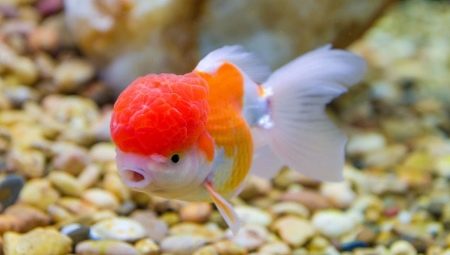
The lionhead is a rather popular creature in the world of aquaristics that does not require complex care and special conditions of detention. Even a novice breeder can provide a comfortable life for this fish, and the breeding process will not cause difficulties. However, some rules should still be followed in order for the fish to live a long and healthy life.
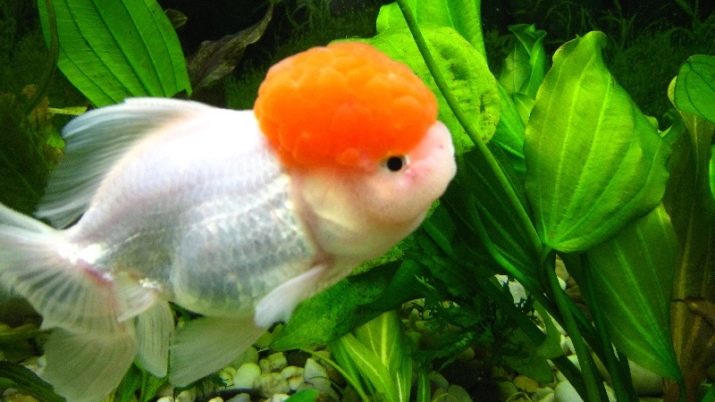
Description
This fish has a stocky body. The caudal fin in the upper part forms an acute angle, joining with the part of the back. The operculums and the upper part of the crown are covered with large seals that form at three months and resemble the appearance of a lion's mane - for this feature the lion head got its name. Sometimes the formed growths are so massive that they even hide the visual organs. The fish does not have a dorsal fin, and the caudal and anal fins are bifurcated.
There are lion heads of different colors, but one thing remains almost unchanged - the contrast of the color of the build-up in relation to the main shade. Red species are popular: it can be a red fish with white spots or, on the contrary, a white pet with red gill covers. Some types of red lionheads are called Chinese, they are characterized by a deep red color of the upper part and a forked shape of the caudal fin with four tines. The ranch also belongs to the Japanese species; it is also called the Korean lionhead. Its peculiarity is that formations on the head are formed only at the age of 2-3 years.
And also aquarists appreciate the golden and pale red species. A white fish with a black top looks unusual in an aquarium. All species can reach a length of 20 cm. An interesting variety is the lion-headed cichlid. It is an olive green fish with a brown, blue or blue tint and an unusual swimming style. But the cichlid is a completely different type of fish, and its maintenance rules may differ from those presented here.
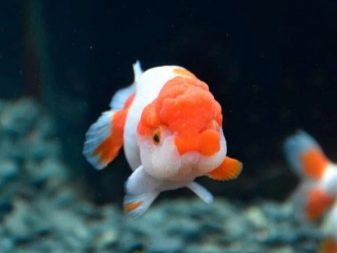
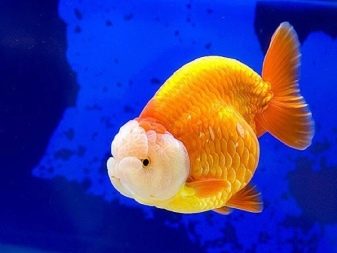
Care
This is a rather large fish, and therefore a large aquarium will be required to maintain it - 50 liters of water are needed for one individual. This creature prefers to tinker a lot in the ground, which often creates turbidity and dirt, so experts advise using coarse sand or pebbles as the ground - then it will be easier to keep the aquarium clean.
Be sure to plant aquarium plants in the tank. But if the vegetation is fragile, the lionhead will quickly damage the stems. In addition, dirt often accumulates on the sheet plates. To avoid these problems, it is recommended to plant aquarium cultures with hard leaves and sturdy roots. For reliability, the rhizome can be additionally strengthened with stones. Usually, aquarists are advised to plant a capsule, elodea, sagittarius, and vallisneria with goldfish.
Temperature limits for the lion head are + 18 ... 30 degrees. In the winter months, it is recommended to lower the temperature to + 15 ... 18 degrees, the rest of the time the optimal values are + 18 ... 23 degrees Celsius. Get a powerful, quality filter, as these fish love to throw dirt. If it is an internal equipment, then clean it 1-2 times a week. When using an outdoor unit, it is sometimes sufficient to clean it a couple of times a year. And also equip the aeration system in the tank.
The recommended water hardness for keeping a lion head is 8-25, acidity is 6-8 units. If the owner noticed that the aquarium pets are passive and, judging by their appearance, they experience discomfort, salt should be poured into the water in proportions of 5-7 grams per 1 liter of water. Salt water is not scary for a lionhead, which perfectly withstands salinity up to 15%.
Do not forget to change 30% of the total volume of water every week and fill in fresh water that has settled during the day.
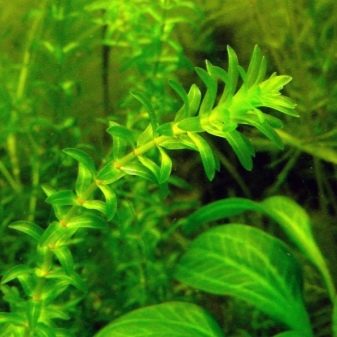

Feeding
Feeding is done 2 times a day. It is required to feed the fish in dosage so that they have time to swallow the proposed food within 5 minutes. The menu for the lion head should be made up of special prepared food, plant and animal food. Experienced owners recommend feeding goldfish plants in the amount of 60%, and the share of dry and animal products should be 40%.
Among the desired greens, you can use spinach, lettuce, boiled buckwheat, millet, oatmeal, vegetables and fruits. Some breeders grow duckweed especially for their pets. Fresh and frozen bloodworms, brine shrimp, daphnia will be a good delicacy. The lion's head will not disdain liver and meat.
If dry food is used for nutrition, then it must be left to soak in the aquarium water for half a minute, and only then offered to the fish. If the food is frozen, it is defrosted beforehand.
Leave the fish hungry once a week - fasting days are very beneficial for aquarium inhabitants.

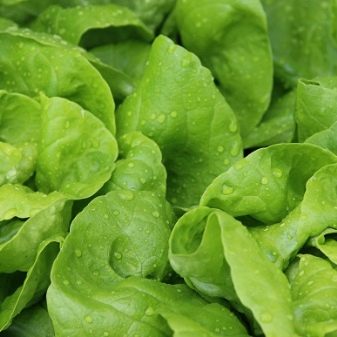
Compatibility
Lionheads are peaceful and friendly creatures that get along well with most fish species. Fast and active fish can become bad neighbors. So, nimble undesirable allies include comets, ordinary goldfish, shubunkin. The fact is that lion-headed fish have unusual proportions, and in this regard, their movements are rather inhibited. Living next to more energetic comrades, the lionhead will always remain hungry, not having time to grab its portion.And also avoid cohabitation of lionheads with aggressive fish, so that the latter do not harm the calm slow creatures. These include, for example, barbs, cichlids, gourami.
Sometimes the lion head remains unnatural due to its poor eyesight, because its growths on the head often lead to this problem. Therefore, it is recommended to settle this species next to the same semi-sighted neighbors - telescopes, bubble eyes and sky-eyed goldfish. And also peaceful coexistence with zebrafish, thorns, speckled catfish and other peaceful fish is possible.
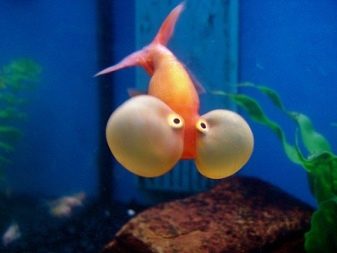

How to breed?
This type of fish reproduces well at home, however, during the spawning period, it is important to bring them as close to their natural environment as possible. The owner chooses the healthiest individuals as producers. A spawning box will need a container with a volume of at least 70 liters. For a successful result, you can separate females and males a week before spawning, in order to thereby "warm up" their attraction to each other. And also during this period, it is customary to feed the fish well with live food.
Plant live plants in the spawning grounds, for example, elodea works well. But artificial vegetation can also be used. After a week of separation, the male and female are placed in a prepared aquarium and gradually reduce the water temperature to +11 degrees, after which they are slowly heated at a rate of 2 degrees per day. This way the temperature is regulated until the fish start spawning. Most often, the process takes place at a temperature of + 20 ... 23 degrees Celsius. All this time, the fish are fed with protein foods, for example, brine shrimp. Three meals a day, but dosed. All leftover food fragments must be siphoned off immediately, and 20% of the aquarium water must be replaced with fresh water every day.
Before spawning, the male begins to pursue his beloved for several days, these days you can observe how the color of the fish becomes more saturated. The male pushes the female towards the plants to stimulate her to spawn. Spawning occurs within 2-3 hours, during which time the fish have time to lay up to 10,000 eggs.
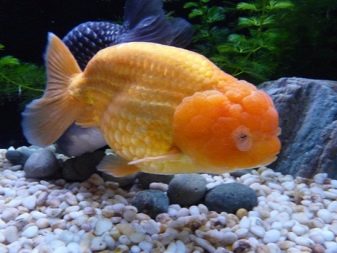
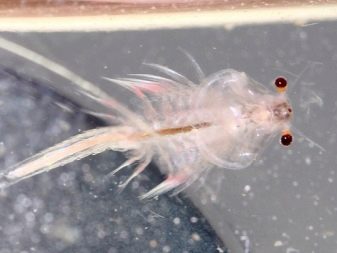
After that, the parents can be put back, otherwise they will begin to feast on their future offspring.
The fry will appear in 4-7 days. It is recommended to feed the cubs with special liquid feed, over time they can be transferred to flakes and brine shrimp. At first, the baby is painted brown or black, over time, the color changes to the shade characteristic of a lion head.
In the next video, you will find more information about the lionhead fish.








